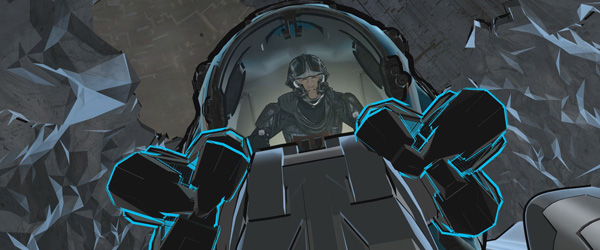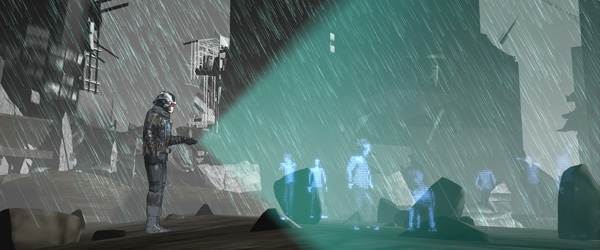Proof visualisation house created previs and postvis services for some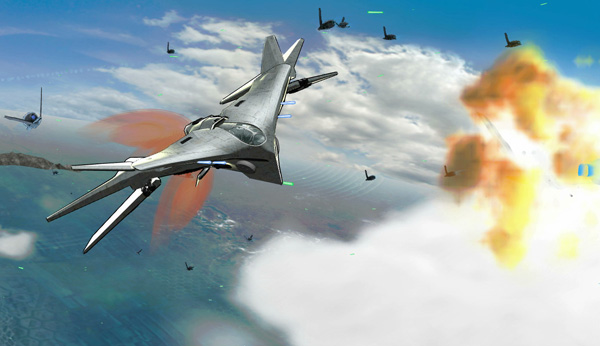
of the most complex and exciting action sequences in Marvel’s galactic
adventure ‘Guardians of the Galaxy’.
Proof’s Previs & Postvis Charts the Galaxy for Marvel’s Guardians |
| Proofvisualisation house created previs and postvis services for some of the most complex and exciting action sequences in Marvel’s recent film ‘Guardians of the Galaxy’, working with the director James Gunn for a year and a half. Their sequences involved many types of shots ranging from live-action shot on green screen, to shots on sets needing CG characters and assets added to them, to full CG battle scenes - most of which required extensive choreography and blocking to help stage the action. |
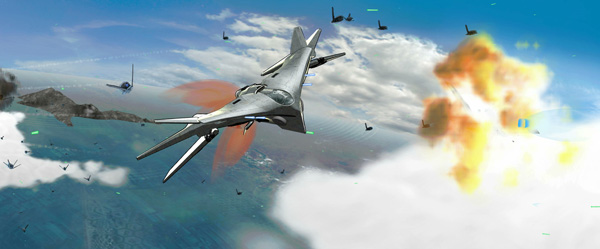 |
|
Fast Paced Shoot“We wanted to be as prepared as possible for a fairly complex and fast paced shoot,” Stephane said. “Earl and his team collected all the necessary information from James, the Art Department and VFX department, and came up with previs that really made sense and made a big difference in the way we prepped and shot the movie. All of the main sequences were previsualized before we started shooting, which allowed each department to get a visual sense of the film and what they had to achieve during the shoot. It was an essential tool for the VFX vendors as well.” |
 |
|
The Virtual SetThe production involved a lot of green screen work and most sets were built from scratch, which meant the team had to make sure that the action they designed during previs would fit into the sets that were under construction. Consequently, Proof followed the work of both Charlie Wood and Stephane Ceretti very accurately to make sure the dimensions of their virtual set would match the actual build. |
 |
|
“It was amazing to work so quickly and creatively while keeping in mind scale and points of interaction. The live-action photography of our sequences took place on a single green screen stage, but once each shot was composited into its specific place in the virtual environment, the sequence played out like a travelling battle.” |
 |
Connector ShotsAn important issue for James, Stephane and Earl was seeing the intense action in this movie through the audience’s eyes. Earl said, “We never wanted the audience to get lost in any of the action scenes or lose track at any time of where they were in the space of any big action moment. We often built ‘connector shots’ into the previs, so once a big action moment happened, or if our characters changed positions, we would always build in an interesting and dynamic wide shot to tell the audience what direction we're travelling, where our heroes are and where our bad guys end up. So, when we cut back in close to one of our heroes, the audience always knew who they were with and not be confused.” |
 |
|
Rocket and GrootA special task the Proof team faced on this film was helping to bring to life the all-CG characters Rocket, a feisty racoon, and Groot, a great walking, almost talking tree. James particularly wanted the audience to forget that these two heroes were digital and, because they are at the heart of the story, to accept them as real characters that actually exist in the world of the film. |
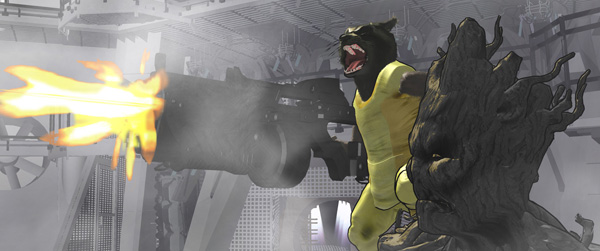 |
|
Framestore and MPC were charged with the initial visual development of the characters and did the first animation work that started to define their personalities, while the Proof team made sure that the previs versions of Rocket and Groot matched what was coming out of their offices. Proof’s TDAnna Leewrote a real-time CGFX fur shader so that our model of Rocket would appear furry and have the same volume that the final character would have.” |
 |
|
Technical CoordinationOne of their more complicated postvis sequences came near the beginning of the film when Groot and Rocket are trying to trap Gamora, another of the Guardians. “While Rocket is wrapped around her neck,” Theresa said, “Groot's limbs are stretching and growing around her waist and legs. Everything - from the actor's performance with a stunt person in green, to rigging and animating Groot vines, to compositing three characters' body parts wrestling, motion blurring and deciding what gets roto'd in front of what – it was all a real challenge. |
 |
“We made sure the shots were technically correct, but also coordinated with Stephane and the editorial team to make those shots work with the story James was trying to tell. As a bonus, the work we were doing in postvis, including the animation, composites and roto, was all passed onto the final vendors so they don’t need to start from scratch.” Much of the previs was devoted to working out how Groot would grow and use his powers to aid the heroes. His powers were also integral to his character development. “He always knew what the team needed from him and would deliver it if he could,” Earl explained. “For example, in the Kyln Prison escape sequence, we figured out with James the specific heights Groot would need to grow to throughout the sequence. This information was both used on set for eye lines and also passed on to the vendors as a guide for their final work.” |
 |
Mapping InteractionThe Kyln escape also features the moment when Groot grows his bark into a shield to block bullets, a scene they worked on carefully with James to define the basic shape of the shield and how Groot would use it to protect himself and Rocket. In the final battle, they experimented with Groot’s light spores and how they emanate from his arm to light up the lower levels of the Dark Aster. His abilities culminate in the cocoon he creates around the heroes that he uses to protect and save them from the Dark Aster crash. |
 |
|
Prison BreakWhile the escape from the Kyln Prison was a major action sequence, it also includes the point at which the Guardians come together as a team for the first time. Therefore, the director wanted to build strong character and humour elements into this sequence. The choreography and visual effects were very complex, but by the time of the shoot, Proof provided James and Stephane with a great deal of data to enable them to work quickly while on set. |
 |
|
“With Steph, we figured out how many stories would be built for the practical set, and also created a guide for how many floors we would need to see in the shots,” said Earl. “We built both the practical set and the CG extension set into our previs to give the VFX team a clear guide to what James was looking for. Once we handed our assets off to the vendors, they ran with it and made it look amazing.” |
 |
3D IntegrationThe postvis team did lot of work on the interior fight scenes of the Kyln Prison escape. The interior shots needed special attention because, as the battle progresses down various corridors and angled rooms, the actors slam against walls and grab set props. The scale of the interiors had all been worked out during previs, as were the distances travelled by each character and the key walls they would hit. |
 |
|
For example, when the character Peter Quill uses the Space Pod to rip open the Necrocraft, Proof’s team devised the idea of putting him into a dive – fitting perfectly with the fact that Quill was falling the entire time and added an extra level of danger to the sequence. |
|
|
Team TransformationOnce back in at Proof’s studio in Los Angeles, Earl and the previs team transformed into a postvis group. Stephane Ceretti said, “James, Earl, the editors and the VFX department put a lot of effort into completing a version of the director's cut made up entirely of postvised shots. We couldn’t have shown the movie without fully post-visualizing the two CG characters Rocket and Groot, all the spaceships and aerial effects, as well as adding in backgrounds and set extensions for many of the green screen sets. This involved more than 1,900 VFX shots to postvis, which meant we had a huge task ahead of us.” Earl considers that the postvis requirements for this film were more extensive than on any show he has worked on so far. “We did postvis for pretty much every VFX shot in the film. It was critical for editing. With two CG characters, the editors needed as much material from us as possible to lock down their cuts. Also, the postvis had to be finished to a very high quality to help James through this process,” he said. |
 |
|
CG Character PostvisThe initial focus of the postvis was on shots that featured the characters Groot and Rocket. “We had Sean Gunn in a green screen suit performing as Rocket and another actor in a green suit with a Groot head on a stick to provide eye lines for the other actors,” said Theresa. “As the plates came in from editorial we immediately tracked them and cleaned them up. Cameras were taken into Maya where our team lit and animated the CG characters over background plates, and rendered out as elements for the compositors. We also added whatever additional props and effects were needed to tell the story. |
|
|
|
“For this project, we wanted to take the postvis composites to a higher level than usual so that the work could be used in screenings for the director, editor and other people involved in the development of the sequences. This helped them visualize the final look of the sequences and served as a great jumping off point for the VFX vendors.” ToolboxProof’s team used Maya for all of the previs work, combined with a suite of proprietary tools they have developed to help them to work faster and more efficiently. They also relied on their new real-time CGFX toon shader, and wrote the new CGFX fur shader for Rocket. For the postvis, further to these tools Syntheyes was added for tracking and Nuke for composting. |
 |
|
Words: Adriene Hurst |


